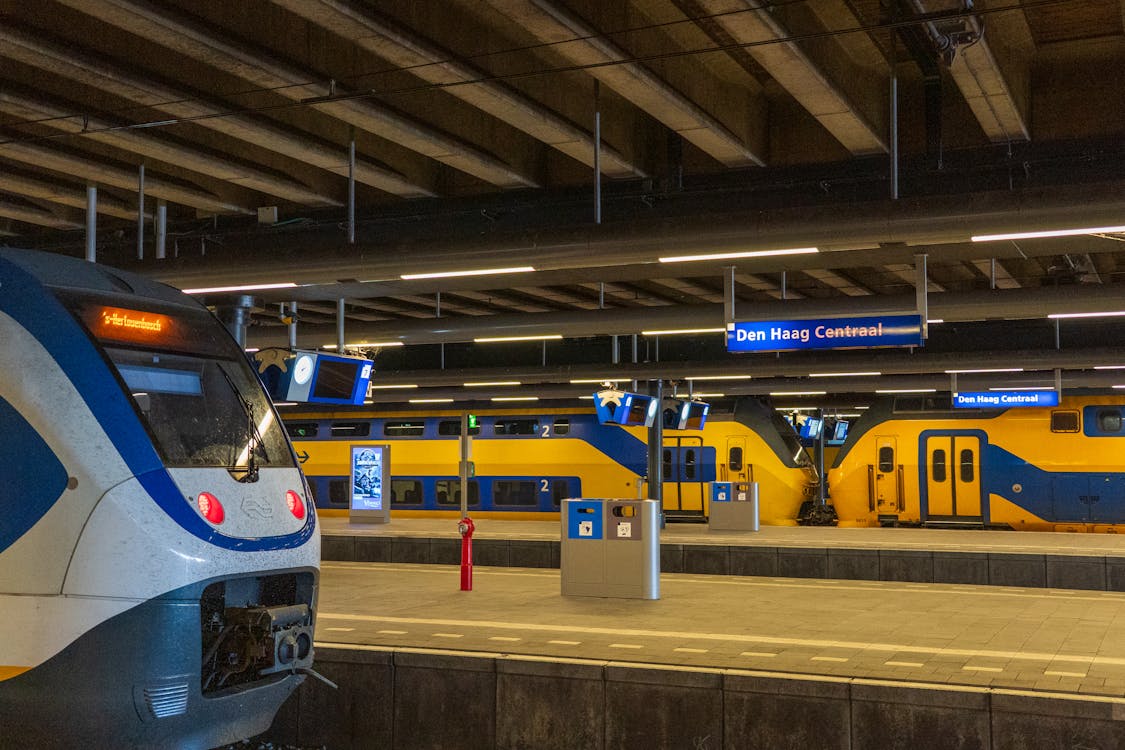
Urban transportation has constantly been a difficulty. Between expanding populations, minimal infrastructure, and the climbing demand for comfort, cities are continuously looking for methods to improve exactly how individuals and cars relocate. Get in artificial intelligence. As soon as seen as a distant idea reserved for sci-fi, AI is currently at the core of several of one of the most exciting shifts in modern-day city life. And it's not just about self-driving autos-- it's about smarter systems, safer streets, and much better preparation for every person that shares the roadway.
From Reactive to Predictive: The New Urban Mindset
Cities used to operate reactively. A traffic light breakdowns? Somebody solutions it. Does a bus route come to be chock-full? Planners modified it months later. However with AI, this timeline has flipped. Sensors placed at intersections, transit hubs, and active roads feed real-time data into AI-powered systems that can not only respond instantaneously however additionally predict what's following.
Picture a system that recognizes when and where congestion will certainly develop before it also happens. That's no longer a dream. By assessing patterns with time, like pedestrian web traffic, weather, and event timetables, AI models help cities stop traffic jams instead of simply responding to them.
Smarter Traffic Signals and Intersection Management
Among one of the most obvious improvements AI has actually given urban transport is in the means traffic signal run. Standard signal systems deal with timers or simple sensing units. But AI can examine real-time footage, identify automobile quantity, and adjust light cycles on the fly. This change decreases unneeded idling, enhances gas effectiveness, and-- perhaps most significantly-- reduces commute times.
Some cities have begun to couple AI-powered cams with traffic control to find not simply cars, however pedestrians and bikers too. This enables signals to readjust for vulnerable road individuals, boosting safety without slowing down general website traffic circulation.
Public Transit Gets a High-Tech Upgrade
Buses and trains are vital lifelines in many cities. Yet hold-ups, route ineffectiveness, and maintenance problems usually frustrate riders. That's starting to change with the help of AI.
Transit firms are currently making use of anticipating analytics to take care of fleets much better. If a bus is running behind schedule, AI can advise course adjustments, alternative pickup factors, or perhaps reassign lorries in real-time. Upkeep is likewise a lot more positive; AI determines early warning signs prior to parts stop working, which keeps cars on the road and riders on schedule.
When public transportation corresponds and reliable, even more people use it. And when even more people use public transportation, cities end up being greener, less stuffed, and less complicated to navigate.
Redefining Parking with Smart Systems
Finding a vehicle parking spot in a city can be one of the most discouraging part of driving. It's time-consuming, demanding, and commonly inefficient. However AI is currently altering the way cities manage vehicle parking management.
Cams and sensors set up in car park and garages track readily available areas and send out updates to centralized systems. Motorists can after that be directed to open up spots with navigating applications or in-car systems, decreasing the moment they spend circling around the block. Consequently, this cuts exhausts and makes city streets much less crowded.
Some AI systems are also efficient in vibrant rates, readjusting parking fees based upon need in real time. This inhibits overuse in jampacked zones and motivates turnover, giving everyone a fairer shot at finding a space.
In largely booming locations where room is restricted, specialized solutions like boat storage in Philadelphia and specialized Philadelphia car storage choices are becoming better than ever. AI can assist manage these centers, ensuring ideal usage and improving security with clever surveillance systems that identify irregular task.
The Rise of Autonomous Vehicles and Ridesharing Intelligence
While self-driving vehicles may not yet control the roadways, they're certainly affecting the instructions of urban transportation. AI is the foundation of independent car innovation, handling everything from navigation to obstacle detection and reaction time.
Yet even before full autonomy takes hold, AI is already transforming ridesharing services. Algorithms assist set guests extra efficiently, decrease wait times, and recommend calculated areas for motorists to wait between prices. With time, these understandings will help in reducing traffic jam and improve lorry tenancy prices across cities.
There's additionally been a rise in AI-enhanced mini wheelchair choices like scooters and bike shares. These solutions are taken care of by AI systems that track use patterns, forecast high-demand areas, and even spot maintenance demands instantly.
Planning the Future: AI and Urban Design
City coordinators now have an effective new ally in artificial intelligence. With access to substantial datasets-- whatever from commuter habits to air top quality levels-- AI devices can design the impact of framework modifications before they're even made. This means better choices regarding where to position bike lanes, exactly how to improve bus courses, or whether to develop brand-new get more info bridges and tunnels.
Urban programmers can likewise make use of AI to design the result of new zoning regulations or property development on transportation systems. This brings about smarter advancement that sustains movement as opposed to overwhelming it.
In places with thick development and restricted property, smart remedies like vehicle storage in Philadelphia are proving to be essential aspects in long-term preparation. AI can streamline area allocation, track use fads, and assist develop storage formats that make the most of ability while reducing impact.
Safer Streets Through Real-Time Intelligence
AI is not almost rate and efficiency-- it's likewise concerning safety. From identifying speeding automobiles in real time to predicting accident-prone zones, AI is assisting make roads more secure for everybody.
Smart surveillance systems powered by artificial intelligence can find unsafe habits, such as unlawful turns, running red lights, or jaywalking. These systems do not simply act as deterrents; they generate data that cities can use to notify future security efforts.
AI is likewise assisting very first -responders get to emergency situations quicker. Real-time web traffic evaluation can assist rescues along the quickest path, even during rush hour. And when secs matter, those time financial savings can be life-altering.
A More Connected and Adaptable Transportation Future
The actual power of AI in metropolitan transportation depends on its ability to adapt. As cities evolve, AI advances with them. Whether it's replying to an abrupt surge in traffic after a sports occasion, anticipating flooding on major roadways, or taking care of a spike in seasonal travel, AI is there, frequently discovering and readjusting.
By weaving AI right into the material of transportation systems, cities are coming to be a lot more intelligent, more receptive, and much more user-friendly. These adjustments may not constantly be visible to the day-to-day commuter, yet the benefits-- much shorter trips, more secure streets, and extra trusted transit-- are really felt every single day.
For those browsing urban life today and looking towards the future, it's clear that artificial intelligence is no longer simply assisting with transport-- it's redefining how our cities move.
See to it to comply with the blog site for even more insights into just how technology is forming city life, and inspect back regularly to stay ahead of the contour.
 Devin Ratray Then & Now!
Devin Ratray Then & Now! Mackenzie Rosman Then & Now!
Mackenzie Rosman Then & Now! Karyn Parsons Then & Now!
Karyn Parsons Then & Now! Nancy Kerrigan Then & Now!
Nancy Kerrigan Then & Now! The Olsen Twins Then & Now!
The Olsen Twins Then & Now!